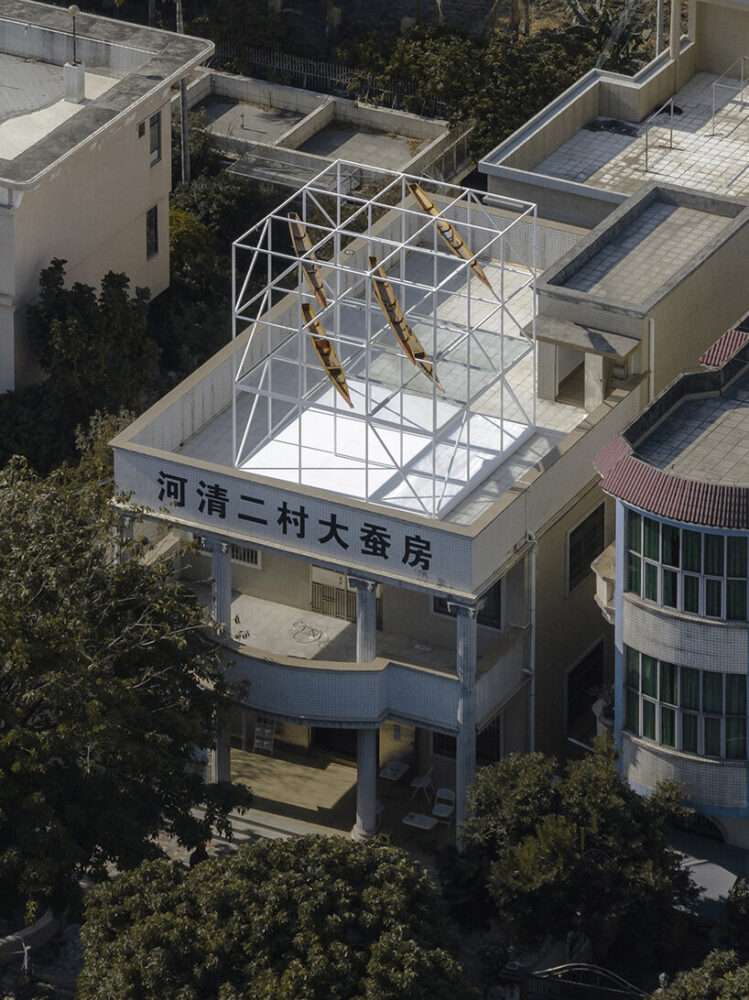Researchers create attachable device for sun exposure
Researchers from Carnegie Mellon University and the University of California develop Hapt-Aids, a wearable bandage with a solar cell that can detect how long the user has been exposed to the sun. A device for health and activity monitoring, the attachable system is created to be small, light, and self-powered. It does not need charging, batteries, or wireless connections, as the system turns human activity into energy and uses that energy to send signals to the user. Current wearable devices like smartwatches can track activity, steps, or exercise, but they need charging, updates, and wireless connections and use sensors, processors, and digital systems that can make them complex and expensive. Hapt-Aids, on the other hand, are designed to be simple, low-cost, and maintenance-free.
Once a user wears one, it works automatically without further action. It can be attached to the skin like a bandage or sticker, and collects energy from human movement or from the environment, such as sunlight or body motion. The energy is stored in a small capacitor, and when the stored energy reaches a set level, the device releases it through a small vibration motor. This vibration tells the user that a certain activity level, like walking distance or sun exposure, has been reached. The design doesn’t use digital sensors or microcontrollers. Instead, the amount of harvested energy is used as a direct measure of activity so the more the user moves or is exposed to energy, the more energy the device collects. Because it is based on energy harvesting, it does not need an external power source, meaning that the system is built using analog circuits that use little power.
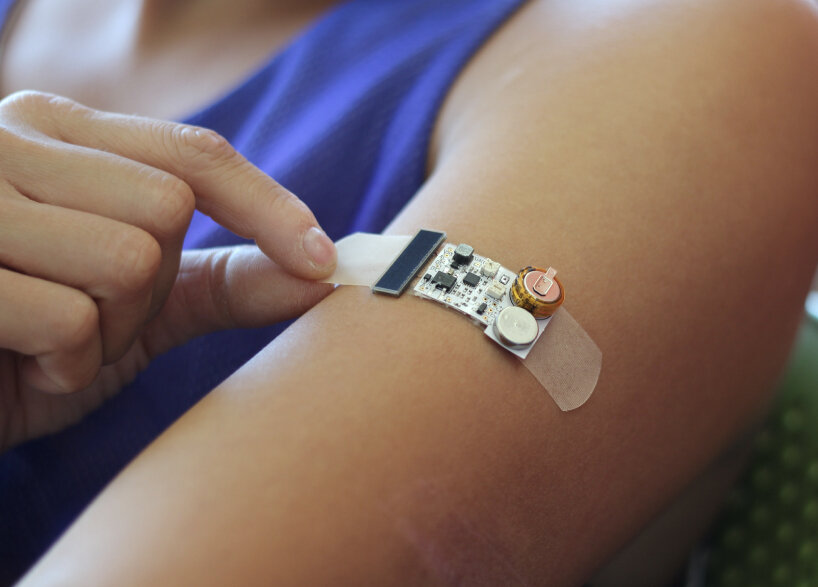
all images courtesy of the researchers Vivian Shen, Xiaoying Yang, Chris Harrison, Yang Zhang
Energy harvester for the wearable bandage with solar cell
The wearable bandage with a solar cell includes an energy harvester, a capacitor for energy storage, and a haptic actuator for vibration. The type of energy harvester changes depending on the activity. For example, a solar cell can collect sunlight for monitoring sun exposure to let the user know how long they have been in the sun, while a piezoelectric film can collect energy from body movement or muscle motion. When the capacitor reaches its threshold, it releases stored energy to the actuator, which vibrates to notify the user. The vibration system allows the user to receive feedback without looking at the device as well as allows them to wear it under their clothes.
In testing, the researchers from the two universities created four prototype versions of Hapt-Aids. Each one focused on different activities such as movement, exposure, or contact. The study documents the tests in the lab and user studies, which confirmed that the device can store enough energy to work effectively and deliver noticeable vibration signals. The device’s design allows users to adjust when it vibrates using the small knob on the wearable bandage with a solar cell. This lets the user set their own target, such as how long they want to stay in the sun or how much they want to walk. When the target is reached, the Hapt-Aid vibrates. So far, the researchers see their device used for various health applications, like a patch on the arm that can track sunlight exposure to avoid skin damage. There’s no news yet on the commercial availability of Hapt-Aids.
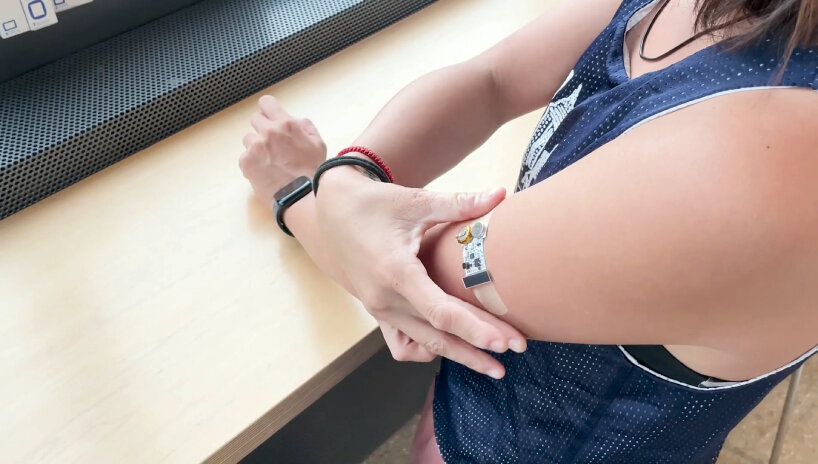
researchers from Carnegie Mellon University and the University of California develop Hapt-Aids
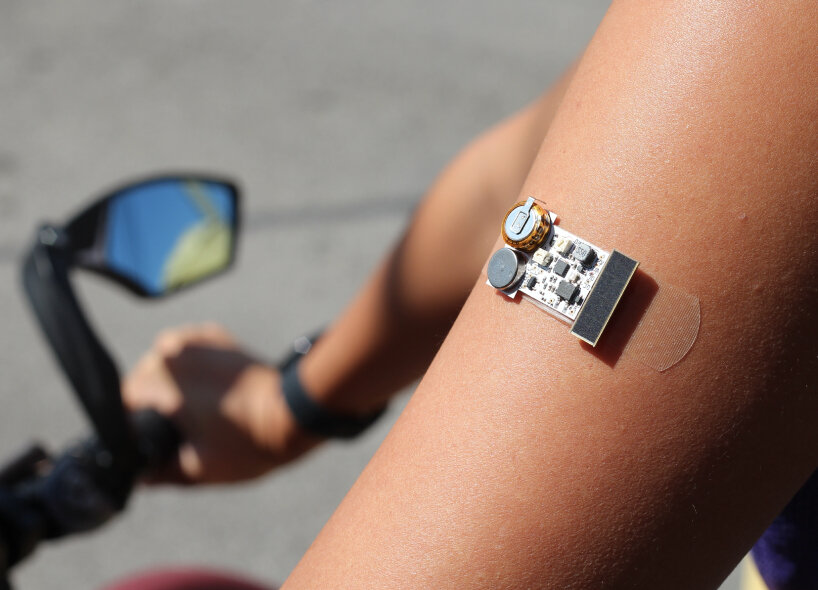
it is a wearable bandage with a solar cell that can detect how long the user has been exposed to the sun
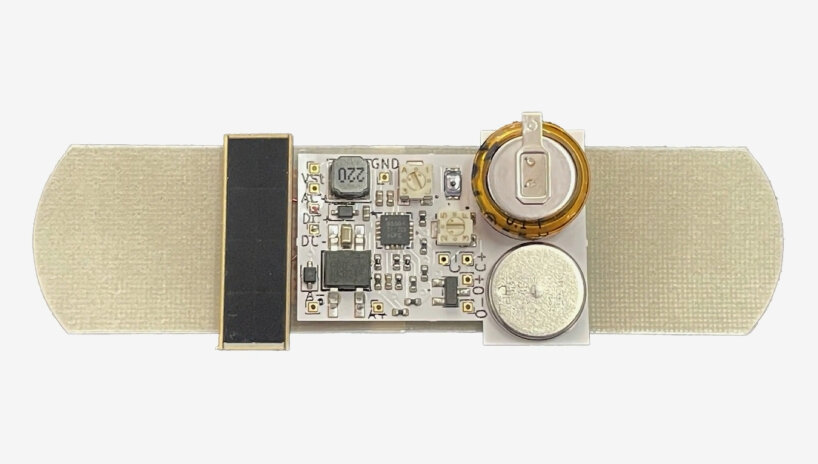
the attachable system is created to be small, light, and self-powered
project info:
name: Hapt-Aids: Self-Powered, On-Body Haptics for Activity Monitoring
institutions: Carnegie Mellon University, University of California | @carnegiemellon, @uofcalifornia
researchers: Vivian Shen, Xiaoying Yang, Chris Harrison, Yang Zhang
study: here
